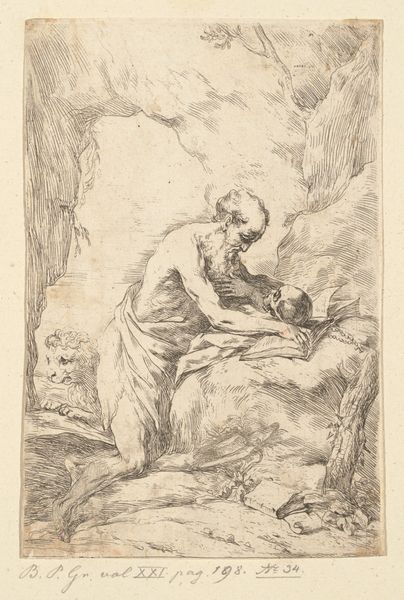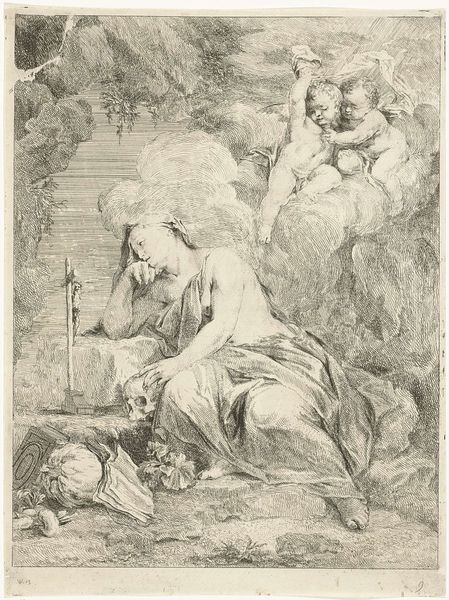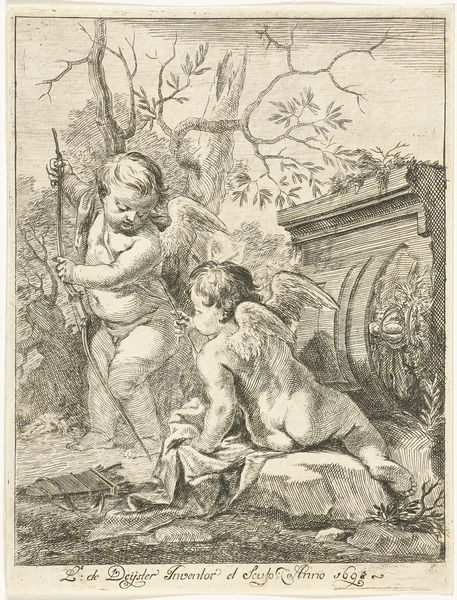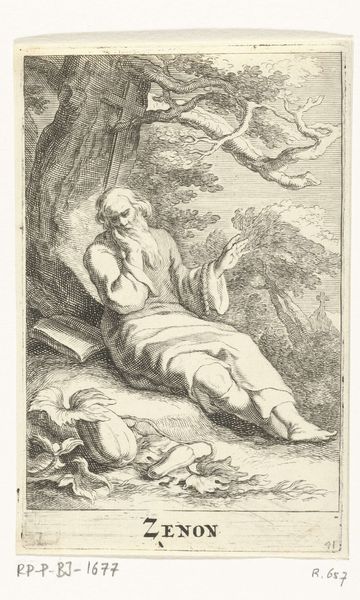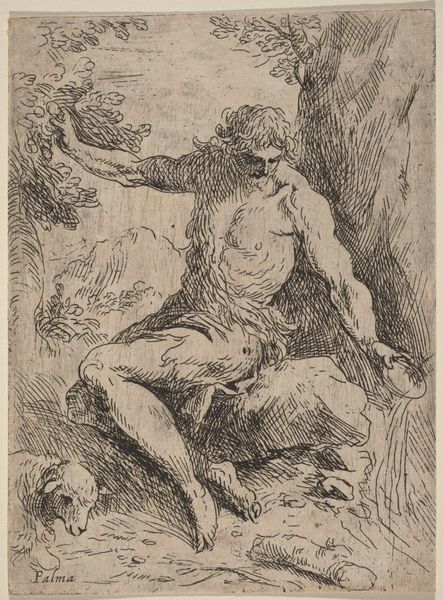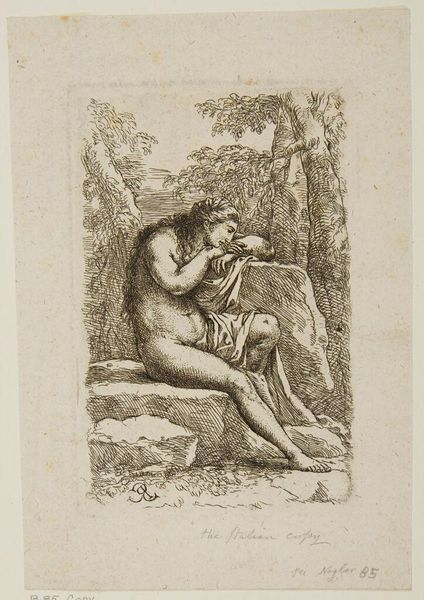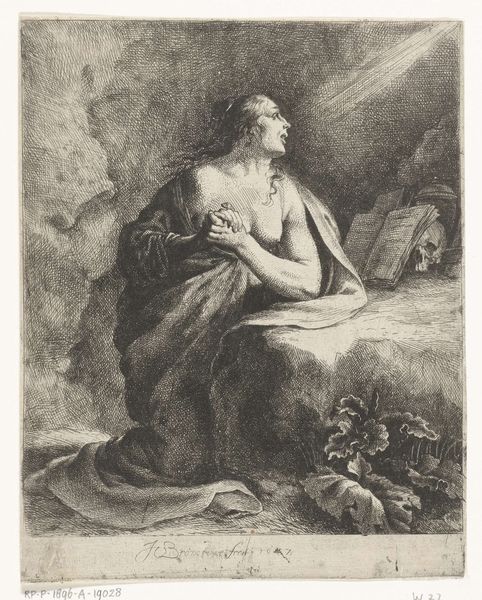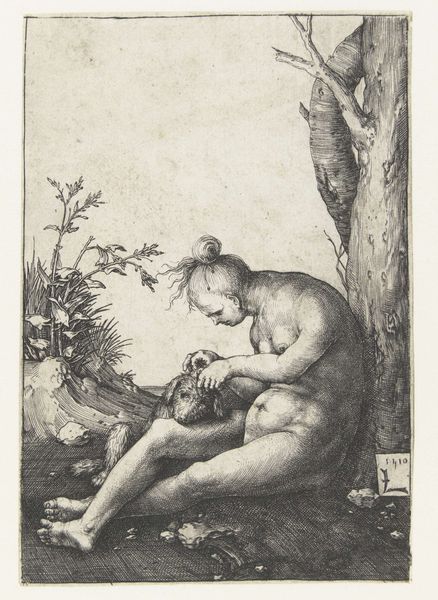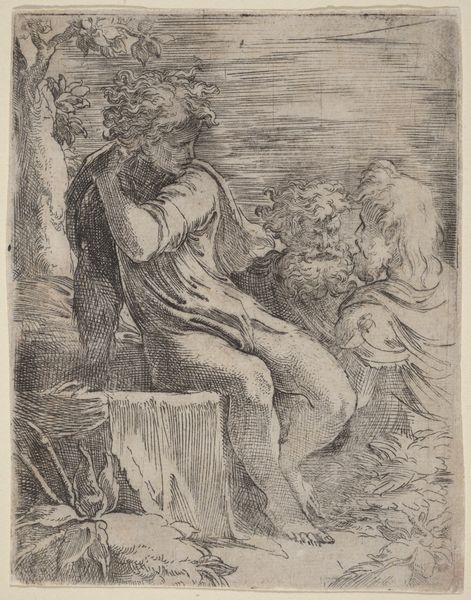
print, etching
#
baroque
# print
#
etching
#
landscape
#
figuration
#
history-painting
Dimensions: height 298 mm, width 181 mm
Copyright: Rijks Museum: Open Domain
Francesco Amato made this print of Saint Jerome sometime between 1570 and 1710, using etching. Etching is an indirect intaglio process, where the artist covers a metal plate with a waxy, acid-resistant ground. The image is then scratched into the ground with a needle, exposing the metal. The plate is immersed in acid, which bites into the exposed lines. The longer the plate is exposed to the acid, the deeper and darker the lines will be. In this print, the crisp and precise lines create a sense of depth and texture, emphasizing the wrinkles in Saint Jerome’s skin, the fur of the lion, and the rough surface of the rocks around him. As a result, the material is as important as the subject matter. By understanding the methods and materials used to make the artwork, we gain insight into the artist’s labor, as well as the social and cultural values attached to the image itself.
Comments
No comments
Be the first to comment and join the conversation on the ultimate creative platform.
